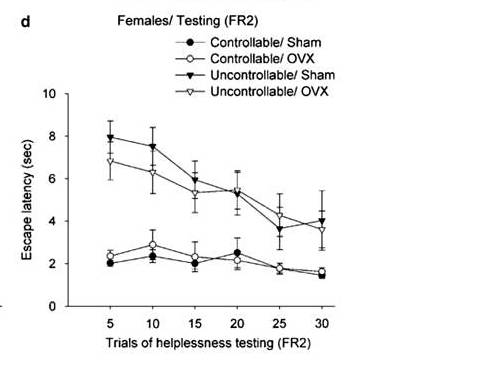This is a classic model of stress induced depression. In this paradigm, animals are exposed to a series of uncontrollable and inescapable stressors after which the animal develops a state of “helplessness” and does not attempt to escape even when the opportunity to do so is presented. Effects are manifested in reduced weight, reduced libido, deficits in tests evaluating cognition, anxiety and depression. The learned helplessness model is applicable to both mice and rats
 Reprinted with permission from Macmillan Publishers Ltd:
Reprinted with permission from Macmillan Publishers Ltd:
Neuropsychopharmacology 33(7):1559-1569, copyright 2008
Dalla et al, 2008: Comparison between the effects of uncontrollable (non escapable) versus controllable electric footshock on the escape latency of female controls and undergoing ovariectomy (the yoked animal paradigm).
References:
Pryce CR, Azzinnari D, Spinelli S, Seifritz E, Tegethoff M, Meinlschmidt G (2011) Helplessness: A systematic translational review of theory and evidence for its relevance to understanding and treating depression. Pharmacol Ther 132(3):242-267
Dalla C, Edgecomb C, Whetstone AS, Shors TJ (2008) females do not express learned helplessness like males do. Neuropsychopharmacology 33(7):1559-1569
